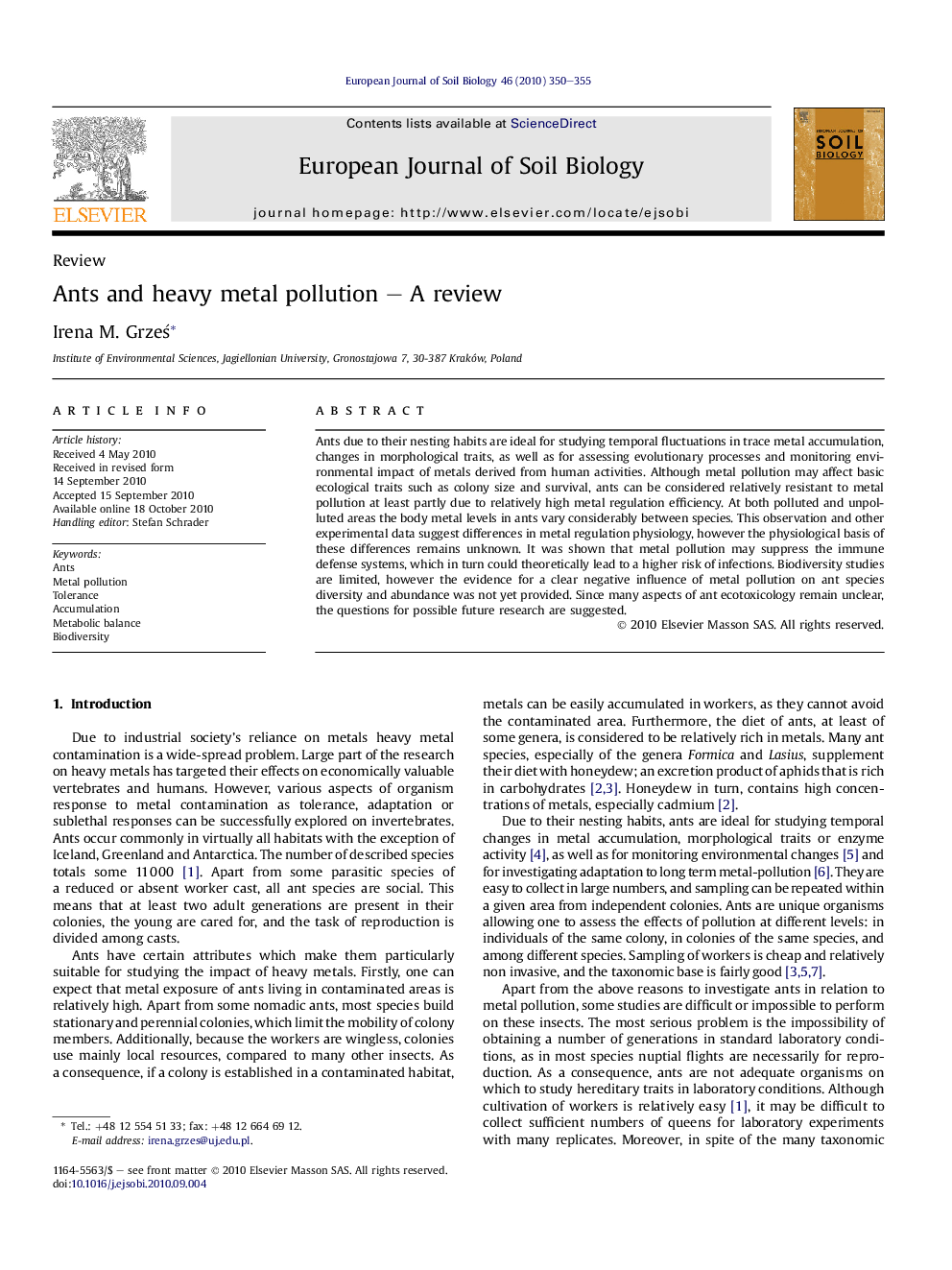| Article ID | Journal | Published Year | Pages | File Type |
|---|---|---|---|---|
| 4392215 | European Journal of Soil Biology | 2010 | 6 Pages |
Ants due to their nesting habits are ideal for studying temporal fluctuations in trace metal accumulation, changes in morphological traits, as well as for assessing evolutionary processes and monitoring environmental impact of metals derived from human activities. Although metal pollution may affect basic ecological traits such as colony size and survival, ants can be considered relatively resistant to metal pollution at least partly due to relatively high metal regulation efficiency. At both polluted and unpolluted areas the body metal levels in ants vary considerably between species. This observation and other experimental data suggest differences in metal regulation physiology, however the physiological basis of these differences remains unknown. It was shown that metal pollution may suppress the immune defense systems, which in turn could theoretically lead to a higher risk of infections. Biodiversity studies are limited, however the evidence for a clear negative influence of metal pollution on ant species diversity and abundance was not yet provided. Since many aspects of ant ecotoxicology remain unclear, the questions for possible future research are suggested.
Research highlights► Body concentrations of metals in ants may differ considerably between species, casts and life stages. ► Difference in body metal concentrations between Formicinae and Myrmicinae can not always be explained by different feeding preferences. ► Further investigations on how ants may benefit from their social structure in polluted environments seem to be particularly desirable.
